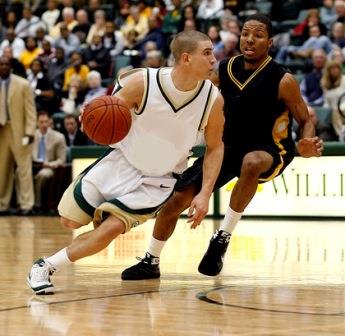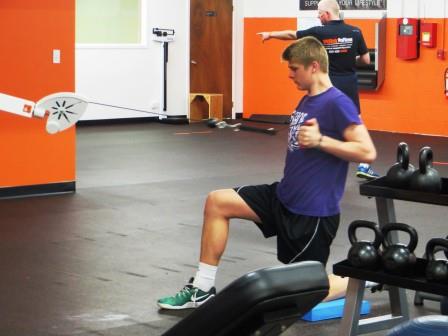Deceleration: The Missing Link in Sports Performance Training
How often have you heard the need for speed for athletic performance? Every coach and athlete wants or needs more speed. While speed is an x factor in many of the sports we train, learning to cut and maneuver effectively is more important. While acceleration is a key component to every sport especially in the first 10 yards, it has to be trained. To become a complete athlete and make a big impact one needs to train the opposite of that which is deceleration. Deceleration is the ability to decrease velocity or to slow down force production. Teaching athletes to decelerate properly is not only important for sport but more importantly for injury prevention. Teaching proper angles and breaking is more effective than teaching to run in a straight line, considering most sports a continuous straight line is not often seen past the 10 yard mark. With over 200,00 ACL tears a year, not to mention MCL and LCL injuries do to rapid or improper deceleration techniques, this technique needs to be taught and learned.
There are 3 main ways we move as an athlete:
- Concentrically – to create acceleration and force production
- Isometric – to stabilize or balance
- Eccentric- to decelerate and decrease force production
For the consideration of strength training we can work on eccentric strength by focusing on the tempo of the movement. Tempo is a very rarely trained aspect in most programming because of many factors. The main factor is time. Athletes have a tendency to want to get in and out of the weight room. Training the eccentric portion of the lift is just as important as the concentric part. To train tempo you can start by adding that into your programming in the main accessory lifts. We tend to have a big emphasis on the first phases of the program to make sure the athletes understand the movement and make them aware of what muscles are working and being affected. Our general tempo is a 3 second eccentric followed by a 1 second pause and then move the weight thought the concentric phase.
For the deceleration portion of the work on the field we look at COD (change of direction) and learning to stabilize and move with proper angels that will not only make the athlete transition better but also do it in a safe manor decrease the chances of a knee injury. When we deal with athletes we have a few ways of deceleration techniques. The first major way is watching them naturally in a controlled manor. We wont have them decelerate in a full speed movement until we feel they are ready. A lot of our work begins on the ladder with icky shuffles and watching their ankle, knee and hip alignment. We want to see that ankle, knee and hip in full alignment and ready to push off. If we see something off with the knee alignment we then go ahead and fix it with other drills. When we get to the cutting or COD part of our sessions we start off with something that forces them to stop linearly or straight ahead.
We will put a ladder 10 yards in front of them and ask the athletes to run not the left of the ladder at about 75%, come to a complete stop and go into icky shuffles and then sprint out of the ladder. This ability to watch an athlete at a controlled speed and no angle is beneficial to fixing any alignment issues they may have.
When the movement has some good sound mechanics we move on to creating a drill that starts off laterally and moves to linear. This drill does the opposite as the above works on the lateral component first then the linear movement.
We will do lateral mini hurdles with a pause on the end leaving the inside leg up in and the outside leg stabilized on the ground. This allows us to see their ability to decelerate laterally. Deceleration laterally is more of a concern for injury prevention than linear breaking because the potential angles that could be caused on the knee. Once an athlete can manage to do these drills with proper alignment we then will go into a 3rd phase of deceleration, which introduces cutting and movement.
Training deceleration will not only help prevent major knee injuries but also will help the athlete learn to cut, move and change direction without losing speed. This ability will make him/her a step above their competition.



Leave a Reply
Want to join the discussion?Feel free to contribute!